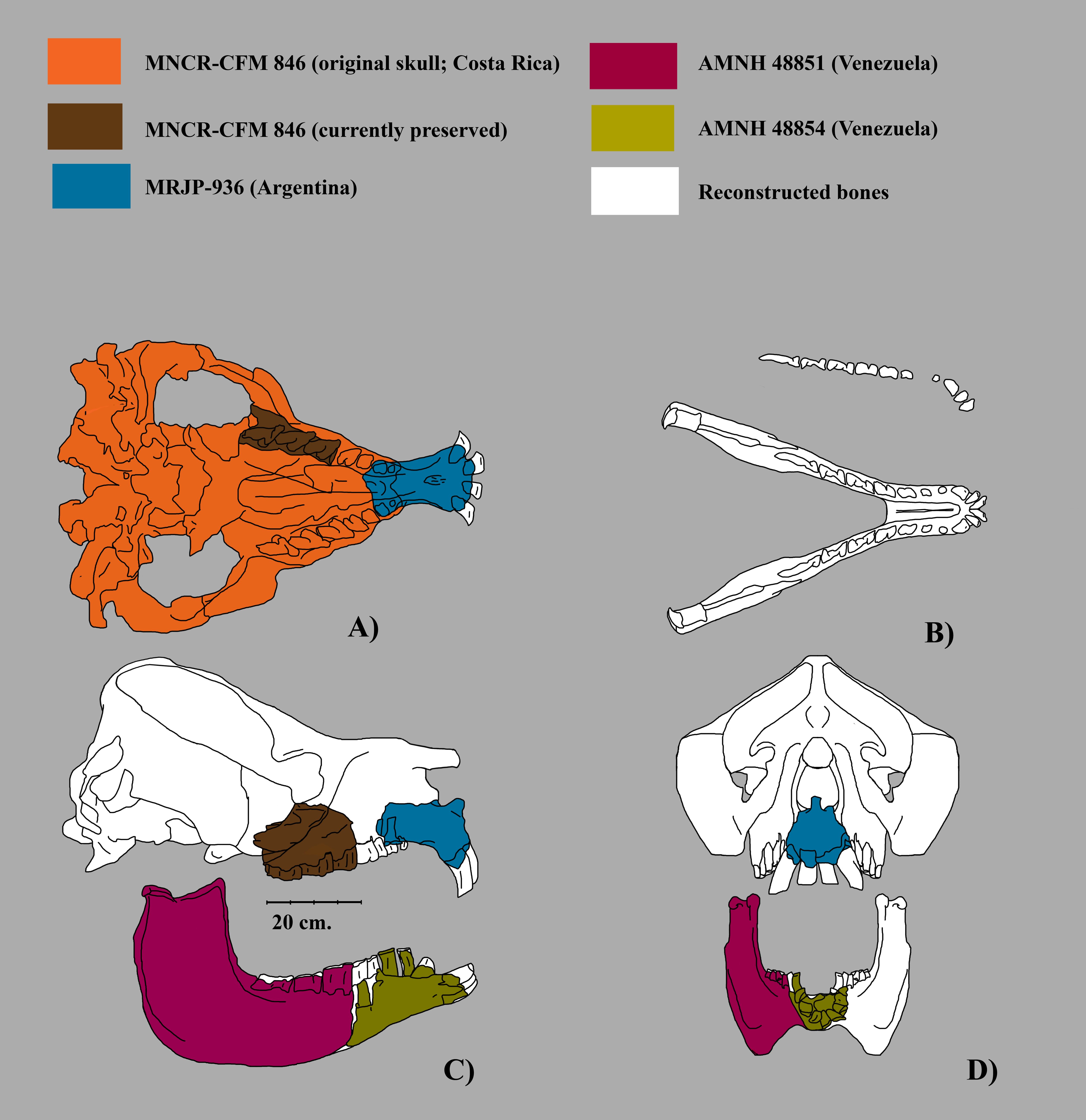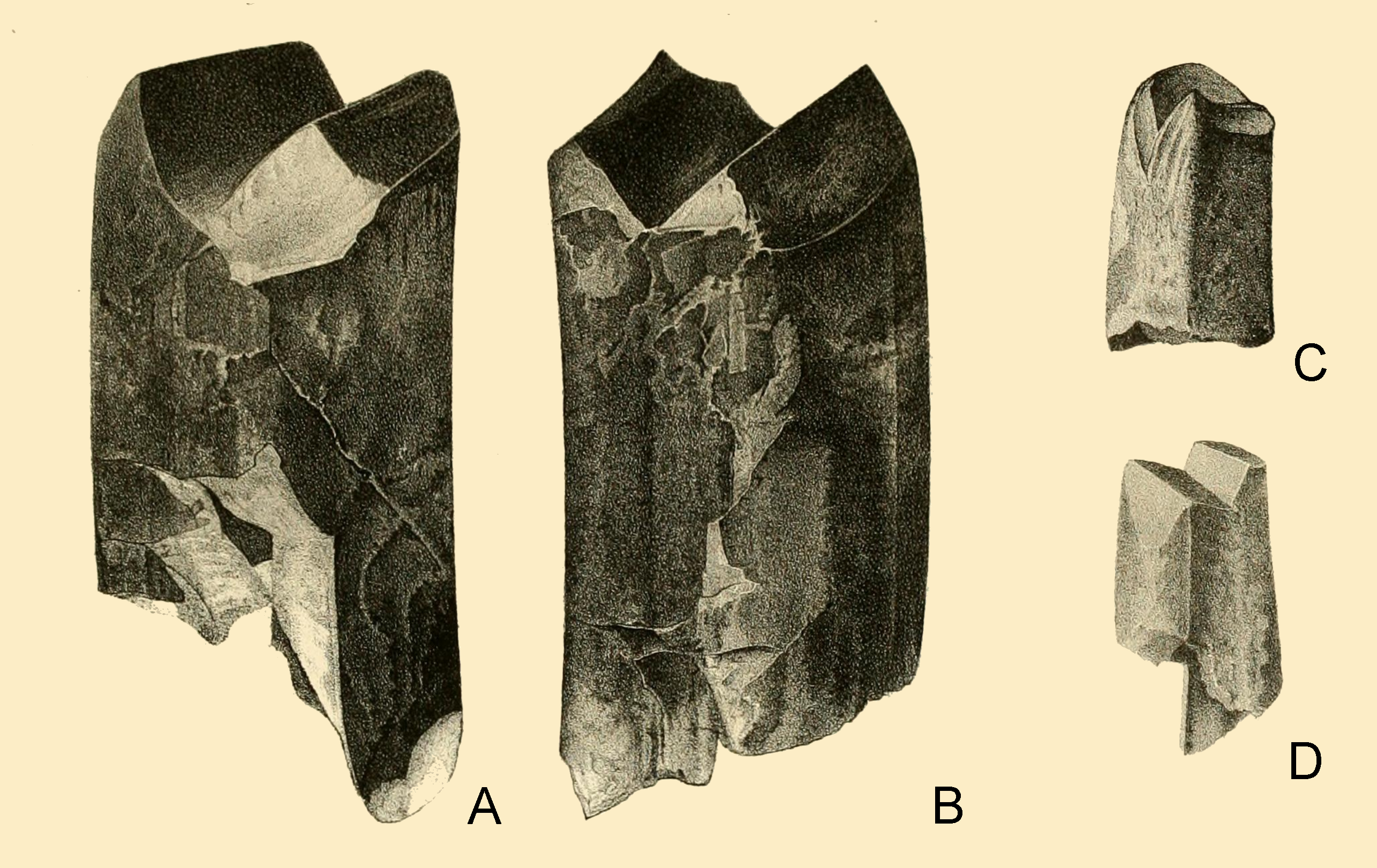|
Cuscatlán Formation
The Cuscatlán Formation is a geologic formation in El Salvador. It preserves fossils dating back to the Pliocene to Middle Pleistocene (Blancan to Irvingtonian) period. Fossil content * ''Borophagus hilli'' * '' Meizonyx salvadorensis'' * '' Megalonyx obtusidens'' * '' cf. Arctotherium sp.''''Arctotherium'' at Fossilworks
Fossilworks is a portal which provides query, download, and analysis tools to facilitate access to the Paleobiology Database
The Paleobiology Database is an online resource for information on the distribution and classification of fossil animals ... .org
* '' [...More Info...] [...Related Items...] OR: [Wikipedia] [Google] [Baidu] |
Formation (stratigraphy)
A geological formation, or simply formation, is a body of rock having a consistent set of physical characteristics (lithology) that distinguishes it from adjacent bodies of rock, and which occupies a particular position in the layers of rock exposed in a geographical region (the stratigraphic column). It is the fundamental unit of lithostratigraphy, the study of strata or rock layers. A formation must be large enough that it can be mapped at the surface or traced in the subsurface. Formations are otherwise not defined by the thickness (geology), thickness of their rock strata, which can vary widely. They are usually, but not universally, tabular in form. They may consist of a single lithology (rock type), or of alternating beds of two or more lithologies, or even a heterogeneous mixture of lithologies, so long as this distinguishes them from adjacent bodies of rock. The concept of a geologic formation goes back to the beginnings of modern scientific geology. The term was used by ... [...More Info...] [...Related Items...] OR: [Wikipedia] [Google] [Baidu] |
Arctotherium
''Arctotherium'' ("''bear beast''") is an extinct genus of the Pleistocene short-faced bears endemic to Central and South America. ''Arctotherium'' migrated from North America to South America during the Great American Interchange, following the formation of the Isthmus of Panama during the late Pliocene. The genus consists of one early giant form, ''A. angustidens'', and several succeeding smaller species, which were within the size range of modern bears. ''Arctotherium'' was adapted to open and mixed habitat. They are genetically closer to the spectacled bear (''Tremarctos ornatus''), than to ''Arctodus'' of North America, implying the two extinct forms evolved large size in a convergent manner, perhaps to facilitate dominating other carnivores in the competition for the biggest carcasses. Evolution Tremarctinae ''Arctotherium'' is part of the Tremarctinae subfamily of bears, otherwise known as the short faced bears, which also includes ''Arctodus'' (North American short ... [...More Info...] [...Related Items...] OR: [Wikipedia] [Google] [Baidu] |
Fossiliferous Stratigraphic Units Of North America
A fossil (from Classical Latin , ) is any preserved remains, impression, or trace of any once-living thing from a past geological age. Examples include bones, shells, exoskeletons, stone imprints of animals or microbes, objects preserved in amber, hair, petrified wood and DNA remnants. The totality of fossils is known as the ''fossil record''. Paleontology is the study of fossils: their age, method of formation, and evolutionary significance. Specimens are usually considered to be fossils if they are over 10,000 years old. The oldest fossils are around 3.48 billion years old to 4.1 billion years old. Early edition, published online before print. The observation in the 19th century that certain fossils were associated with certain rock strata led to the recognition of a geological timescale and the relative ages of different fossils. The development of radiometric dating techniques in the early 20th century allowed scientists to quantitatively measure the ... [...More Info...] [...Related Items...] OR: [Wikipedia] [Google] [Baidu] |
Neogene North America
The Neogene ( ), informally Upper Tertiary or Late Tertiary, is a geologic period and system that spans 20.45 million years from the end of the Paleogene Period million years ago (Mya) to the beginning of the present Quaternary Period Mya. The Neogene is sub-divided into two epochs, the earlier Miocene and the later Pliocene. Some geologists assert that the Neogene cannot be clearly delineated from the modern geological period, the Quaternary. The term "Neogene" was coined in 1853 by the Austrian palaeontologist Moritz Hörnes (1815–1868). During this period, mammals and birds continued to evolve into modern forms, while other groups of life remained relatively unchanged. The first humans (''Homo habilis'') appeared in Africa near the end of the period. Some continental movements took place, the most significant event being the connection of North and South America at the Isthmus of Panama, late in the Pliocene. This cut off the warm ocean currents from the Pacific to ... [...More Info...] [...Related Items...] OR: [Wikipedia] [Google] [Baidu] |
Geology Of El Salvador
The geology of El Salvador is underlain by rocks dating to the Paleozoic. Prior to the Pennsylvanian, sediments deposited and were intensely deformed, intruded by granite rocks and metamorphosed. Northern Central America took shape during uplift in the Triassic, large than its current area and extending east to the Nicaragua Rise. The Cayman Ridge and Bartlet Trough formed from longitudinal faults at the crest of the uplift. Deformation in the Cretaceous brought granite intrusions, particularly in what is now Nicaragua. Much of the terrain and coastline of the country is defined by volcanoes and volcanic deposits produced from the subduction of the Cocos Plate. On the surface, rocks in El Salvador primarily date to the Pliocene and early Pleistocene and are typically volcanic. Some of the oldest surface exposures are in the Metapan area, with pre-Mesozoic monzonite together with Cretaceous marine limestone, overlain by Paleogene volcanic and terrestrial sedimentary rocks. The 650 fo ... [...More Info...] [...Related Items...] OR: [Wikipedia] [Google] [Baidu] |
Neues Jahrbuch Für Geologie Und Paläontologie
''Neues Jahrbuch für Geologie und Paläontologie'' is a peer-reviewed scientific journal covering research in geology and paleontology. The journal is published monthly, with 4 volumes per year. Abstracting and indexing The journal is abstracted and indexed in Science Citation Index Expanded and Current Contents. According to the ''Journal Citation Reports'', the journal has a 2019 impact factor The impact factor (IF) or journal impact factor (JIF) of an academic journal is a scientometric index calculated by Clarivate that reflects the yearly mean number of citations of articles published in the last two years in a given journal, as i ... of 0.981. References External links * Geology journals Publications established in 1807 English-language journals E. Schweizerbart academic journals Quarterly journals Paleontology journals {{paleontology-journal-stub es:Journal of Molluscan Studies ... [...More Info...] [...Related Items...] OR: [Wikipedia] [Google] [Baidu] |
List Of Fossiliferous Stratigraphic Units In El Salvador
This page lists the fossiliferous stratigraphic units in Central America. Belize El Salvador Guatemala Honduras Nicaragua Costa Rica Panama See also * Lists of fossiliferous stratigraphic units in North America ** List of fossiliferous stratigraphic units in Mexico * List of fossiliferous stratigraphic units in Colombia Several stratigraphic units in Colombia have provided fossils. The richest formations are the Devonian Cuche and Floresta Formations, the Cretaceous Paja Formation, the Paleocene Cerrejón Formation and the Miocene La Venta site. The latte ... * List of fossiliferous stratigraphic units in the Caribbean References Bibliography ;Honduras * {{DEFAULTSORT:Fossiliferous stratigraphic units in Central America *Central America Central America Geology of Central America Central America-related lists Geology-related lists Geology of Belize ... [...More Info...] [...Related Items...] OR: [Wikipedia] [Google] [Baidu] |
Cervidae
Deer or true deer are hoofed ruminant mammals forming the family Cervidae. The two main groups of deer are the Cervinae, including the muntjac, the elk (wapiti), the red deer, and the fallow deer; and the Capreolinae, including the reindeer (caribou), white-tailed deer, the roe deer, and the moose. Male deer of all species (except the water deer), as well as female reindeer, grow and shed new antlers each year. In this they differ from permanently horned antelope, which are part of a different family (Bovidae) within the same order of even-toed ungulates (Artiodactyla). The musk deer (Moschidae) of Asia and chevrotains (Tragulidae) of tropical African and Asian forests are separate families that are also in the ruminant clade Ruminantia; they are not especially closely related to Cervidae. Deer appear in art from Paleolithic cave paintings onwards, and they have played a role in mythology, religion, and literature throughout history, as well as in heraldry, such as red dee ... [...More Info...] [...Related Items...] OR: [Wikipedia] [Google] [Baidu] |
Mixotoxodon
''Mixotoxodon'' ("mixture ''Toxodon''") is an extinct genus of notoungulate of the family Toxodontidae inhabiting South America, Central America and parts of southern North America during the Pleistocene epoch, from 1,800,000—12,000 years ago.''Mixotoxodon'' at .org Description 
[...More Info...] [...Related Items...] OR: [Wikipedia] [Google] [Baidu] |
Geochelone
''Geochelone'' is a genus of tortoises. ''Geochelone'' tortoises, which are also known as typical tortoises or terrestrial turtles, can be found in southern Asia. They primarily eat plants. Species The genus consists of two extant species: A number of tortoise species have been recently removed from the genus. This taxon as formerly defined was "polyphyletic, representing at least five independent clades". Tortoises removed include members of ''Aldabrachelys'' (from the Seychelles and Madagascar), ''Astrochelys'' (Madagascar), ''Chelonoidis'' (South America and the Galápagos Islands), ''Stigmochelys'' and ''Centrochelys'' (Africa), and the extinct ''Megalochelys'' (southern Asia). These species are also unique for their ability to remember patterns and spatial pathways. Similar to mammals, these tortoises can remember directions and pathways by remembering the correct pathways in their long-term memory. Fossils * ''Geochelone burchardi'' Tenerife giant tortoise * ''Geochelon ... [...More Info...] [...Related Items...] OR: [Wikipedia] [Google] [Baidu] |
Eremotherium
''Eremotherium'' (from Greek for "steppe" or "desert beast": ἔρημος "steppe or desert" and θηρίον "beast") is an extinct genus of giant ground sloth, in the family Megatheriidae, the largest and most heavily built family of sloths. ''Eremotherium'' lived in the southern parts of North America and the northern parts of South America from the Pliocene, around 5.3 million years ago, to the end of the Late Pleistocene, around 10,000 years ago. ''Eremotherium'' was widespread in tropical and subtropical lowlands and lived there in partly open and closed landscapes, while its close relative ''Megatherium'' lived in more temperate climes. Both genera reached the size of today's elephants and were among the largest mammals in the Americas. Characteristic of ''Eremotherium'' was its robust physique with comparatively long limbs and front and hind feet especially for later representatives- three fingers. However, the skull is relatively gracile, the teeth are uniform and high ... [...More Info...] [...Related Items...] OR: [Wikipedia] [Google] [Baidu] |

.jpg)

.jpg)

